Known for having stunning beaches, dramatic caves, and jam-packed cities, Vietnam is the perfect getaway for those seeking dynamic action mixed with tranquility. Located in Southeast Asia, the country boasts extensive coastlines, numerous national parks, and stunning mountainous landscapes, perfect for adventure-seekers.
The busy city streets are dominated by scooters, with about 3.1 million cruising the capital boulevards. Modernity has conquered the skyline with glass and steel architecture. It’s outside the cities where adventure awaits tourists who want to escape into the breathtaking views of Ha Long Bay, Fansipan Mountain, or Hang Son Doong Cave.
Chào Mừng – Welcome to Vietnam!
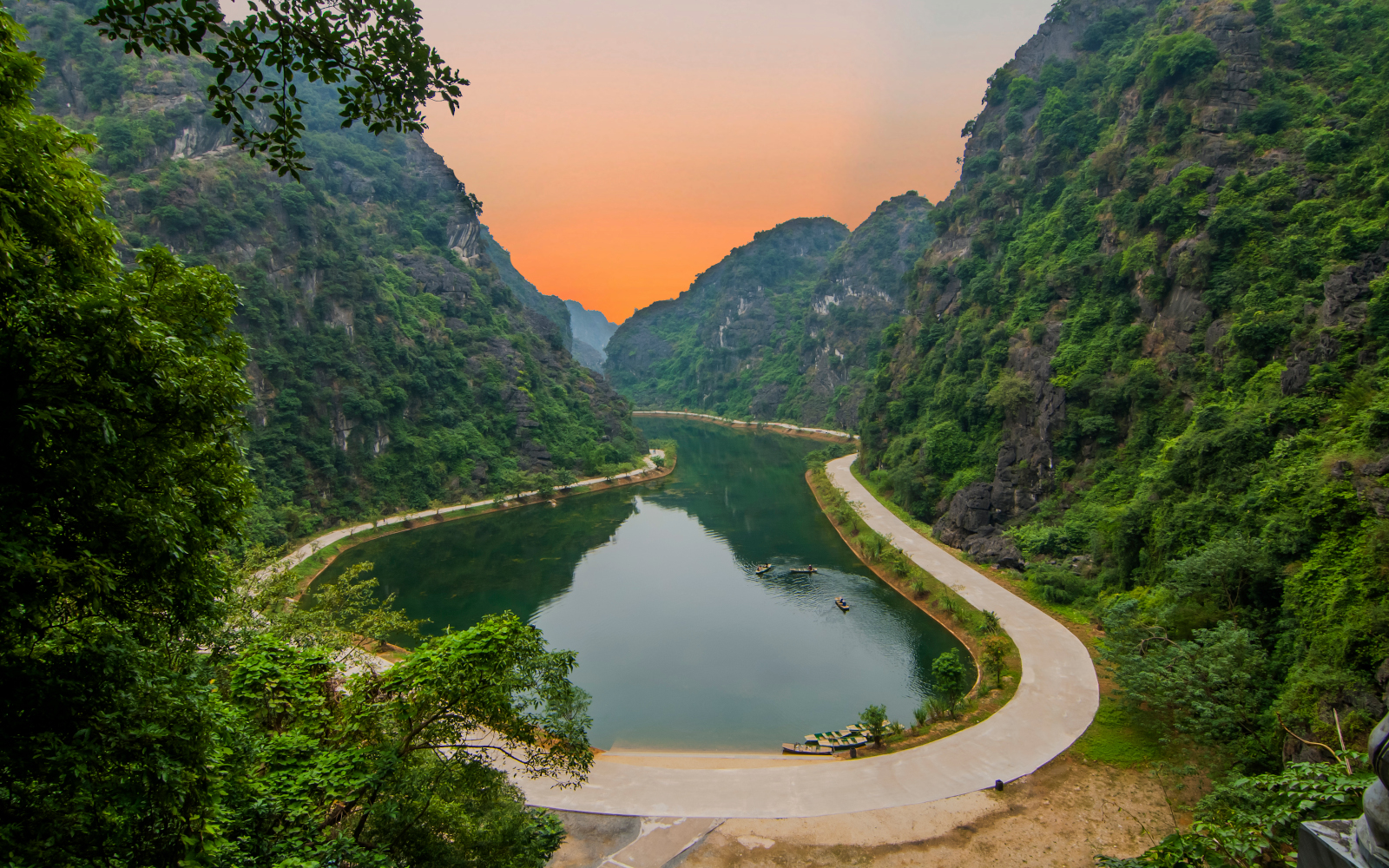
Hanoi is the capital of Vietnam and is layered with a complicated and somber history. The capital was once a battleground that marked the beginning of the First Indochina War, and ever since, it has been shrouded from the public eye until it began to open up in the 1990s.
Today, tourists can experience the past, by visiting memorials, as well as the influence of both French and Chinese occupation. Currently, the city is pushing past its dark history and opening its doors to tourism. The Old Quarter is one of the most popular destinations and a must-see in the city because of its temples, pagodas, markets, and restaurants.
We cover the basics of visiting below. For more in-depth coverage, Uncover Vietnam is the best Vietnam travel guide to soak it all in. Yo! (that’s the finish for how to say “cheers”)
- Culture and Language
- Spending Budget
- How to Get Around
- Top Cities to Visit
- Points of Interest
Culture and Language
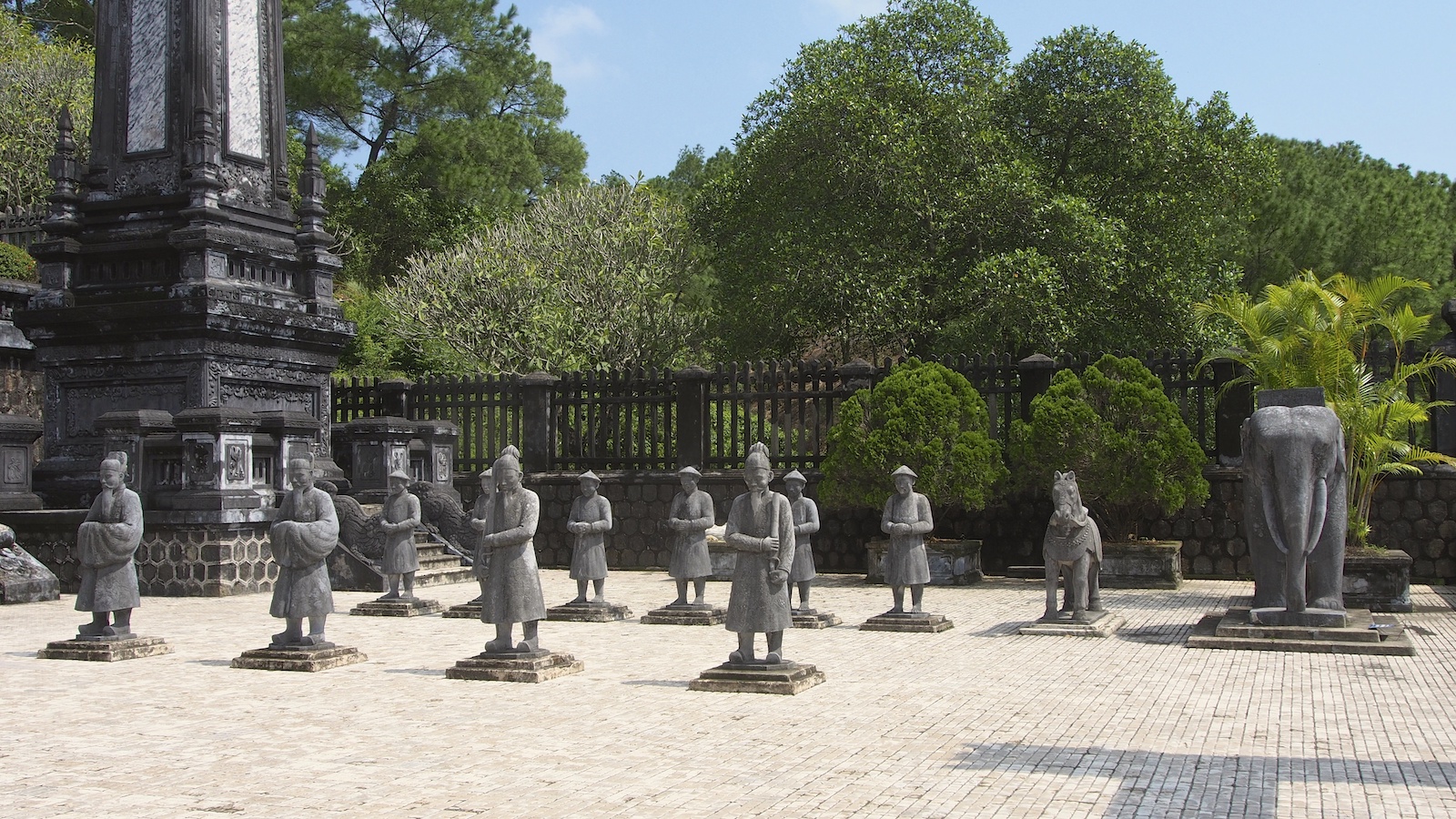
Similar to many Asian countries, Vietnam was once ruled by dynasties. The dynasties, which started back in 2879 BC, controlled the country until the French made Vietnam one of their colonies in 1858.
Vietnam History
The French didn’t stay in power forever, and by World War II, Japan had invaded. It wasn’t until after WWI that France reoccupied Southern Vietnam, and Northern Vietnam was controlled by the communist leader, Ho Chi Minh. When the French-Viet Minh War began, the United States allied with France to stop communism.
At this time, Vietnam was separated into two countries – Northern and Southern Vietnam. By 1959, Ho Chi Minh wanted full control and a unified country ruled by Communism. The United States feared the spread of Communism in Asia and declared war with troops arriving in Vietnam in 1965.

By 1973, the US withdrew from Vietnam, and Southern Vietnam surrendered to Communism. While Vietnam has had its dark days, it’s pulled through to look toward a brighter future. Once a struggling nation, the country is now home to over 97 million people (as of 2020) and is set to become a developed nation.
The fast-growing economy of Vietnam with tourism also expanding throughout its borders. Tourism has helped strengthen the economy, and with a record 18 million international visitors in 2019, the numbers are only climbing year by year.
Official Language
Vietnamese is the official language of the country, which is spoken by 87 million people worldwide. It’s also the national language of Vietnam, though foreign languages are still present throughout the country.

Older generations may still speak French from the occupation days, while English is becoming more common in touristy areas. However, a few minority languages and influence from neighboring countries in remote villages of Vietnam.
For many, the minority or historic languages are important because Vietnamese culture worships their ancestors. Respect for ancestors also transcends respect for the family and community.
The culture is very respectful, and they don’t appreciate criticism. Symbols are also important culturally, with dragons, lotus, and bamboo being the most important.
Spending Budget

With tourism on the rise, Vietnam is getting more expensive to visit, but it’s still an affordable country to travel to. The most important parts of your budget will be airfare, accommodation, food, drink, and transportation. It’s important to consider your budget before you set off for your journey to ensure that you’re fully prepared for your trip.
Airfare
The cost of your flight will be a large portion of your budget, and you should expect to spend a fair amount for your economy ticket. Budget flights may be available, which would cut the cost in half.
Similar to any vacation, the time of year that you travel and when you book your ticket can change the price. Spring and autumn are the most popular times to visit Vietnam, so you’ll see the prices of flights increase during those months. You can also save money by booking your flight further ahead of your departure date.

Accommodations
Like any country, Vietnam can be toured on a backpacker’s budget, moderate budget, and luxury budget. Most backpackers will spend a few dollars a night for a hostel, which should provide you with breakfast and internet.
A nice hotel will cost more but is the most popular choice for a moderate budget. Vietnam also has plenty of luxury resorts and accommodations that have high prices – hundreds to thousands of dollars per night.
Airbnb is another option in the big cities. For travelers who want private accommodation and a kitchen to cook their own food, Airbnb is the best choice.
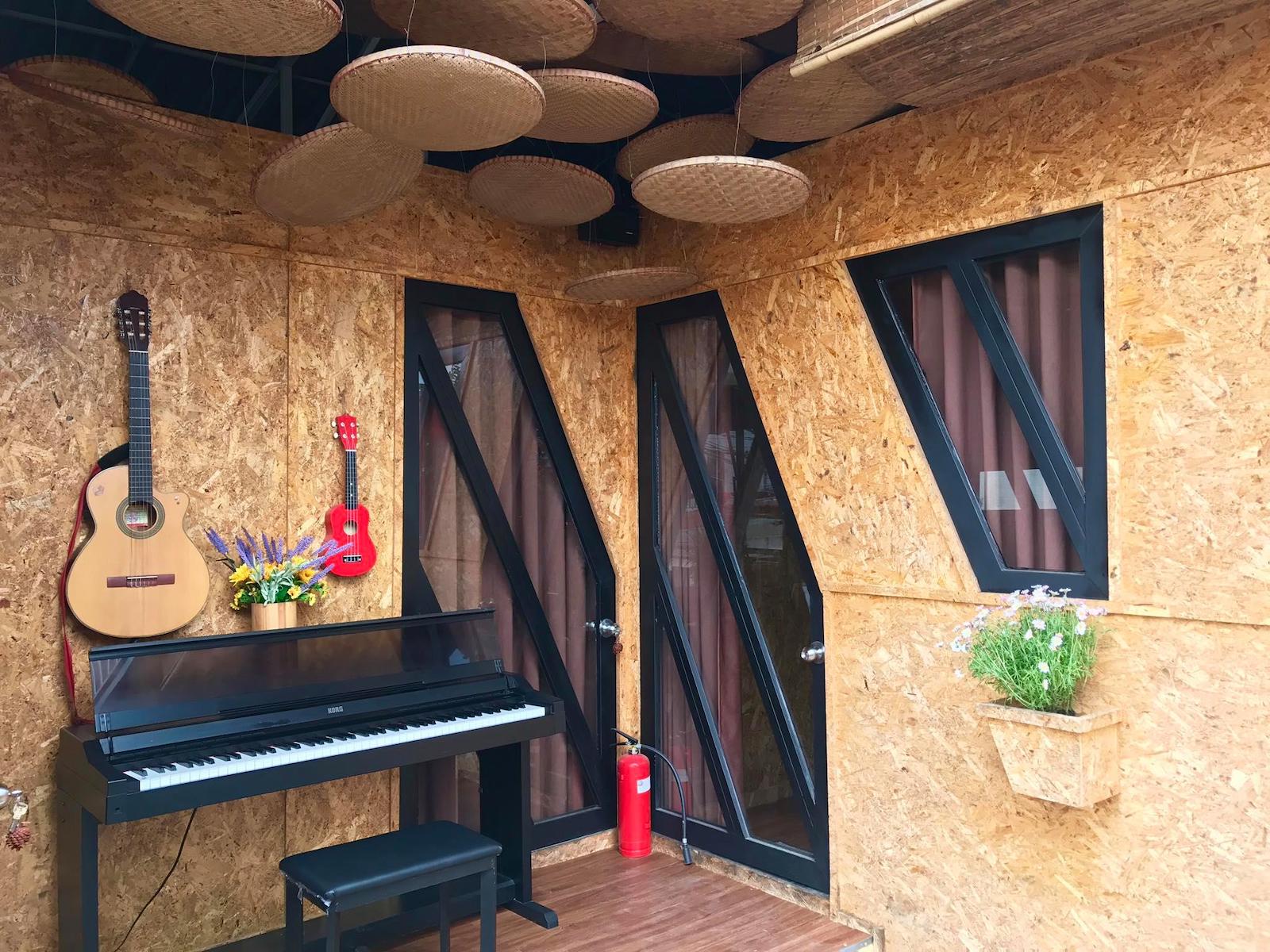
Vietnamese Food
Vietnamese food is affordable and delicious. Many travelers prefer to eat out so that they can experience authentic Vietnamese cuisine. Goi cuon is a traditional starter dish, which is a clear spring roll with a side of peanut sauce. Banh mi is a Vietnamese sandwich that is filled with pork or beef with vegetables.
Bun cha is popular street food, which is barbequed pork with cold rice noodles and broth. Pho is perhaps the most well-known noodle dish from Vietnam that is made with rice noodles, onions, and meat – like chicken, pork, or beef.
Dining Out
The best news is that tasty food is very affordable throughout the country. Street food is absolutely delicious and will only cost a few dollars. If you prefer to sit down in a restaurant, you should expect the pay more, especially in touristy areas.

Drinking is also enjoyed amongst tourists, and you’ll find that there are many locals who are drinking more due to the growing middle-class economy. Beer, spirits, and cocktails are all popular and rather affordable compared to some American cities. If you’re sticking to touristy areas, you should expect to pay more for alcoholic beverages.
In big cities, like Ho Chi Minh City, you will find swanky bars that have excellent views of the city. Outside of the bustling metropolis destinations, bars will be quieter and more local. Nightlife is lively in the country, and you’re always bound to find a good party.
How to Get Around
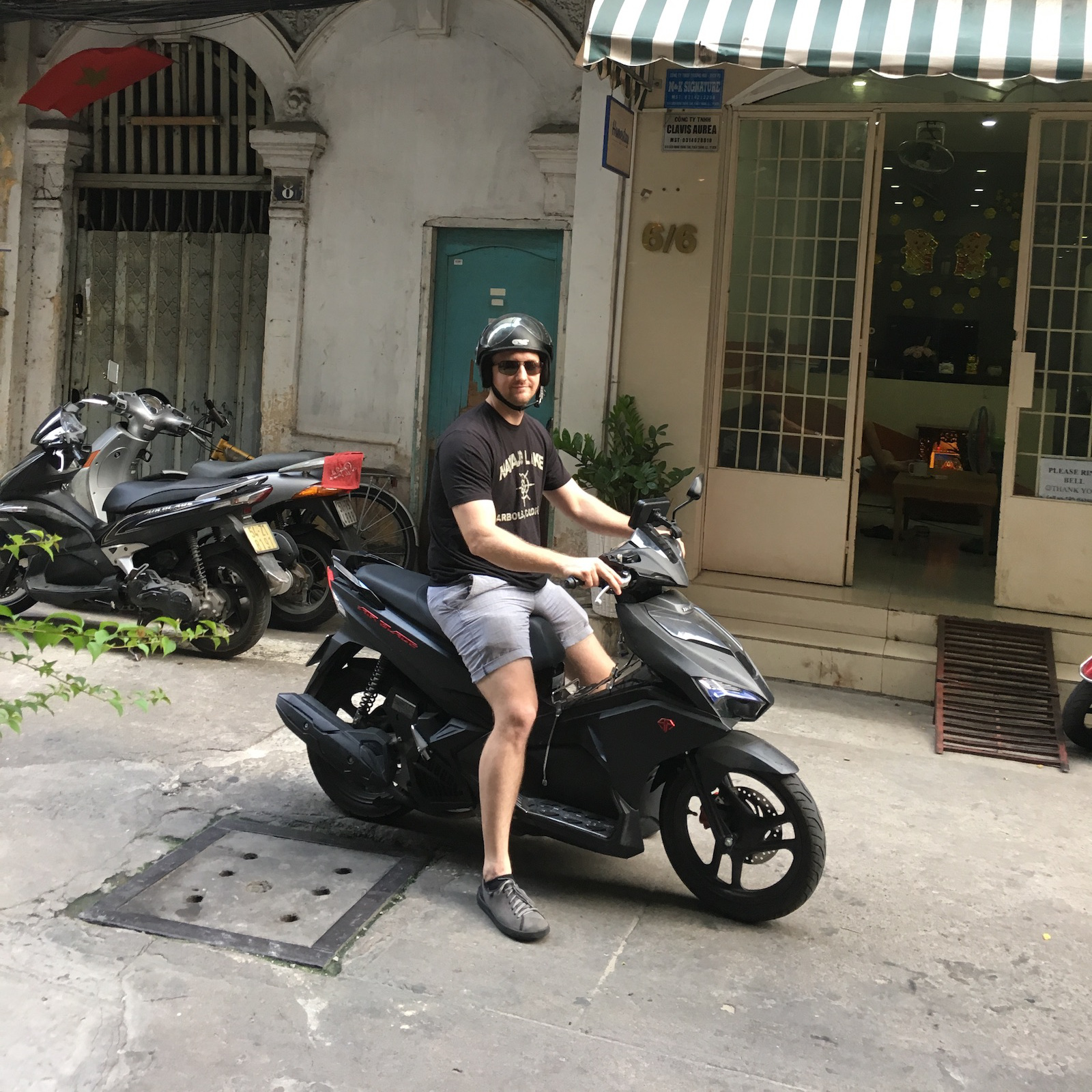
Another part of your budget that is important to consider is transportation. There are a lot of places to visit in Vietnam, and you will likely want to venture between cities and destinations. Motorbikes are a convenient way to get around, however, be aware that the rules of the road in Vietnam are different. Other options include flights, buses, trains, and taxis.
Flights
One of the best ways to get around that will save you travel time is to take a domestic flight. There are a few budget airlines that operate within the country. The earlier you book, the cheaper the overall cost will be, but even with a late-minute flight, tourists can expect to pay less than one hundred dollars.
Buses
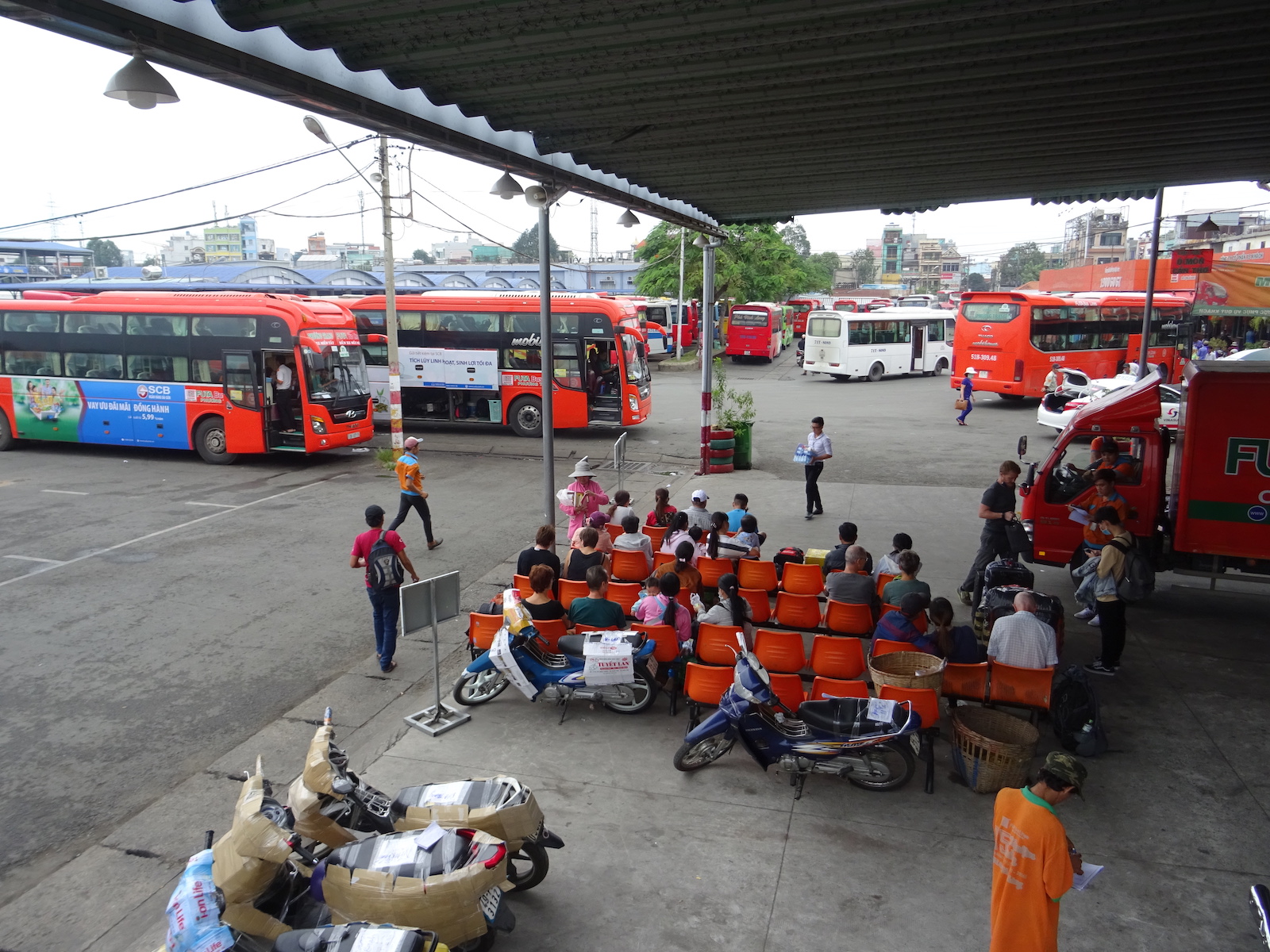
Buses are the most affordable way to travel; however, there’s lots of traffic and it can take you hours to reach your destination. For backpackers, buses are the best way to travel because they can see more of the country and still save money.
Trains
Trains are another option for traveling throughout the country and have similar prices to bus tickets. The only difference is that trains can eliminate the experience of traffic and road chaos by sending you quietly along the tracks.
While the train is not as developed as in other countries, it’s reliable between large cities. Most people prefer to use the trains when they have a long trip, which they often book overnight so that they can sleep.
Taxis
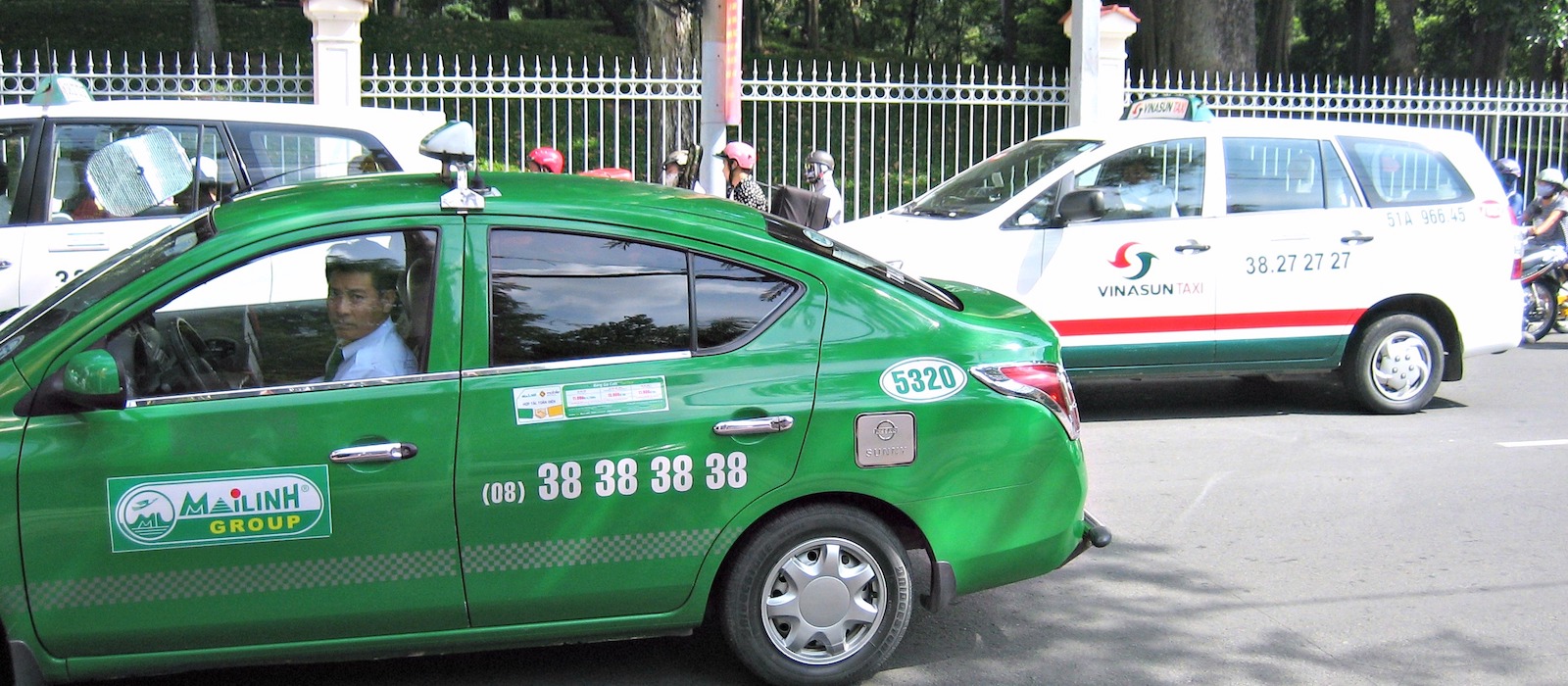
Taxis are another option to get around a specific city and are relatively affordable. Vinasun and Mai Linh are the most reliable companies that do not overcharge tourists for their rides. Most taxis will run on a meter but expect to have an adrenaline rush as you experience navigating the chaotic street traffic.
Finally, walking is a great way to experience a city or destination, and it’s free. Many tourist areas are safe to walk in as long as you keep your belongings close and are aware of your surroundings. As with any new travel destination, you should avoid walking alone at night.
Top Cities to Visit
Vietnam is a land of stunning landscapes, and the cities are one of the most popular tourist destinations. Hanoi and Ho Chi Minh City hold the records for the tallest buildings in Vietnam, while places like Nha Trang and Da Nang are known for their beaches. Here are some of the top cities in Vietnam.
Ho Chi Minh City

Once called Saigon, Ho Chi Minh City was renamed after the Communist leader and is a constant reminder of the country’s military power. The busy city is now home to a diverse group of people, with ex-pats and tourists becoming more popular.
Military museums can educate you on the country’s past, while the Independence Palace is a stunning modern building. The lively city is constantly busy, even as the sun goes down. Tourists can slip into the night for a fun time at the bars and try a variety of delicious street food dishes.
Hanoi

Considered by some to be more beautiful than Ho Chi Minh, Hanoi is the largest city in the north known for highlighting the past. French colonial architecture is still standing within the city and is central to the city’s Old Quarter.
There are many different memorials and museums dedicated to the difficult history, and the new energy of the city has pushed it towards a bright future. Dining is a big draw for tourists in the city who are eager to taste traditional Vietnamese food.
Hoi An
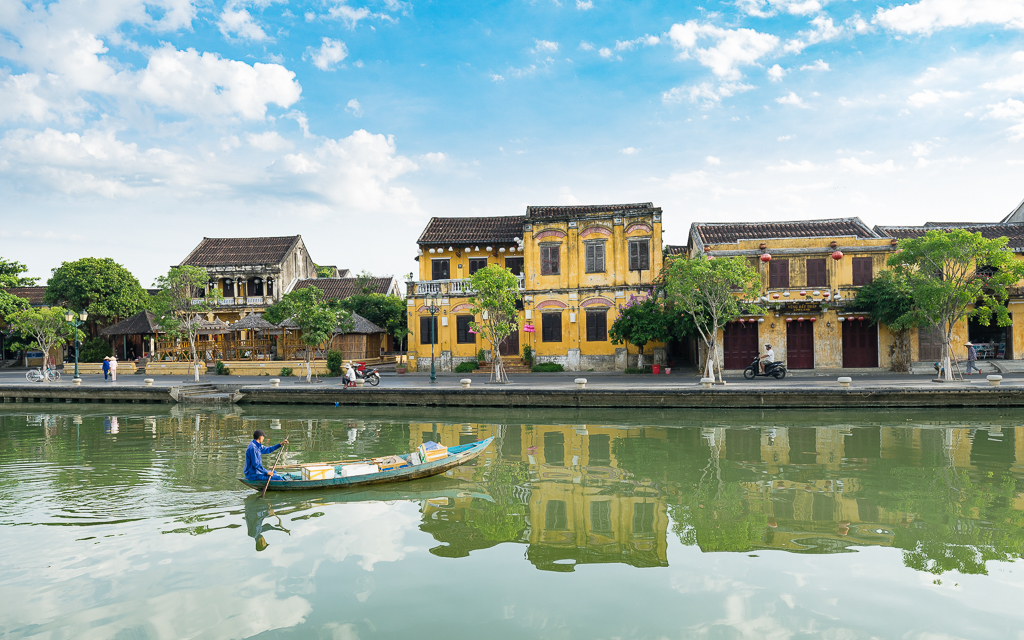
Hoi An is a unique city that is filled with watery canals and a mixture of colonial villas and Chinese pagodas. The city blends the various cultures into one, and tourists can easily see the French and Chinese influence in the architecture and streets.
The riverside restaurants are increasingly popular where you can get an authentic bowl of pho to satisfy your hunger.
Da Nang

My Khe Beach is the biggest attraction for the city of Da Nang, which features a vibrant green coastline with resorts, high rises, restaurants, and bars. Now a holiday destination, the city is a top pick because of its clean, white-sand beaches.
Plenty of watersports also attract more adventurous tourists, but for those looking to relax, you can simply drop a towel and lay out under the warm sun.
Dalat

More rural than other locations on this list, Dalat was once a French holiday resort. A mixture of French colonial villas and Chinese structures dot the city streets.
Tourists can escape in a horse-drawn carriage or visit the city’s version of the Eiffel Tower. Just outside the city walls, the mountains are a big draw for hikers, mountain bikers, and white-water rafters.
Hue
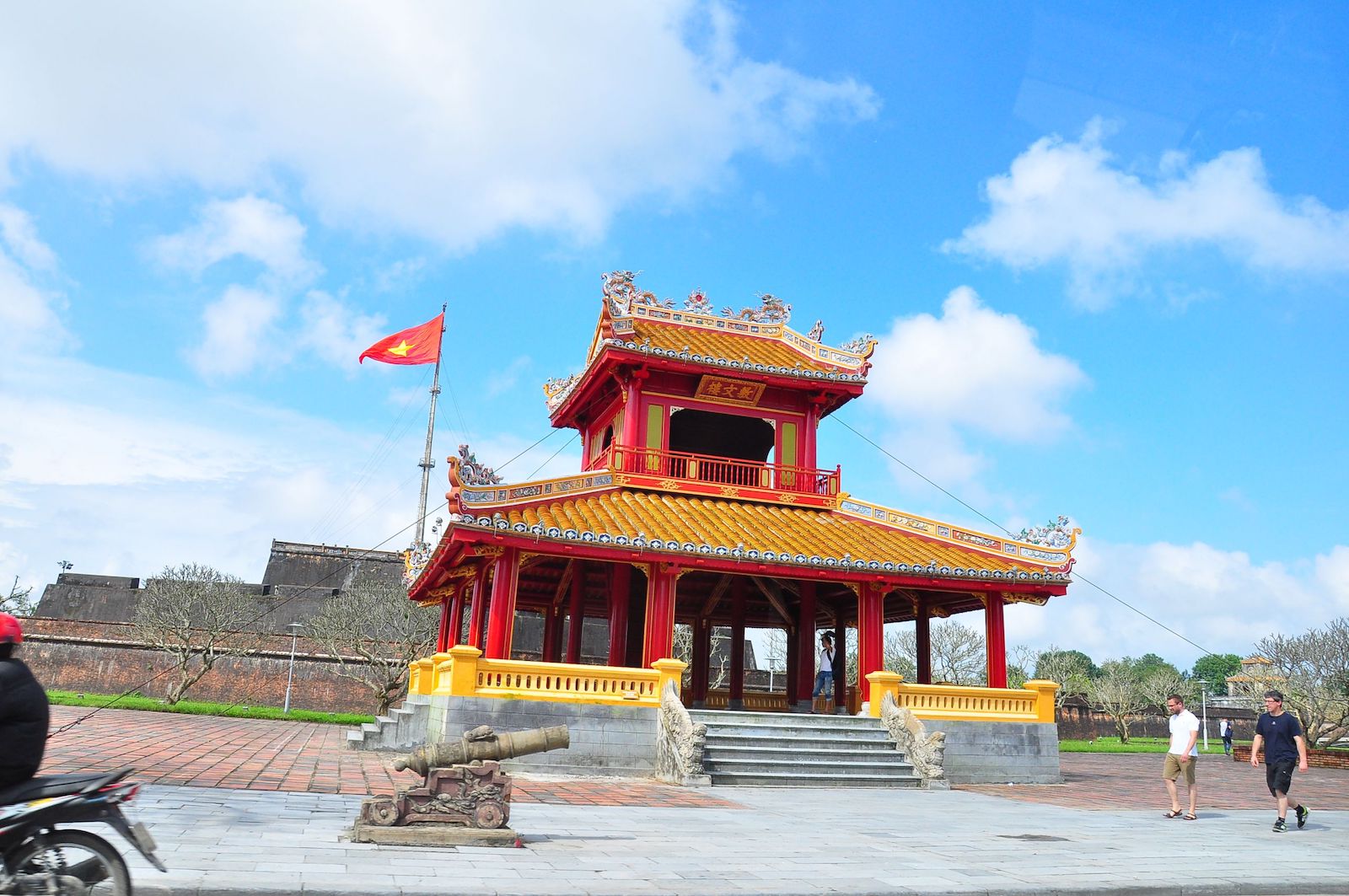
Hue used to be the imperial capital of Vietnam, though now the city rests with a variety of ancient ruins that are open to the public. The palace was destroyed during the Vietnam War, and parts of it remain intact, and other sections have been rebuilt. The ruins remind tourists of ancient times, where they can imagine an emperor gazing across the landscape.
Nha Trang
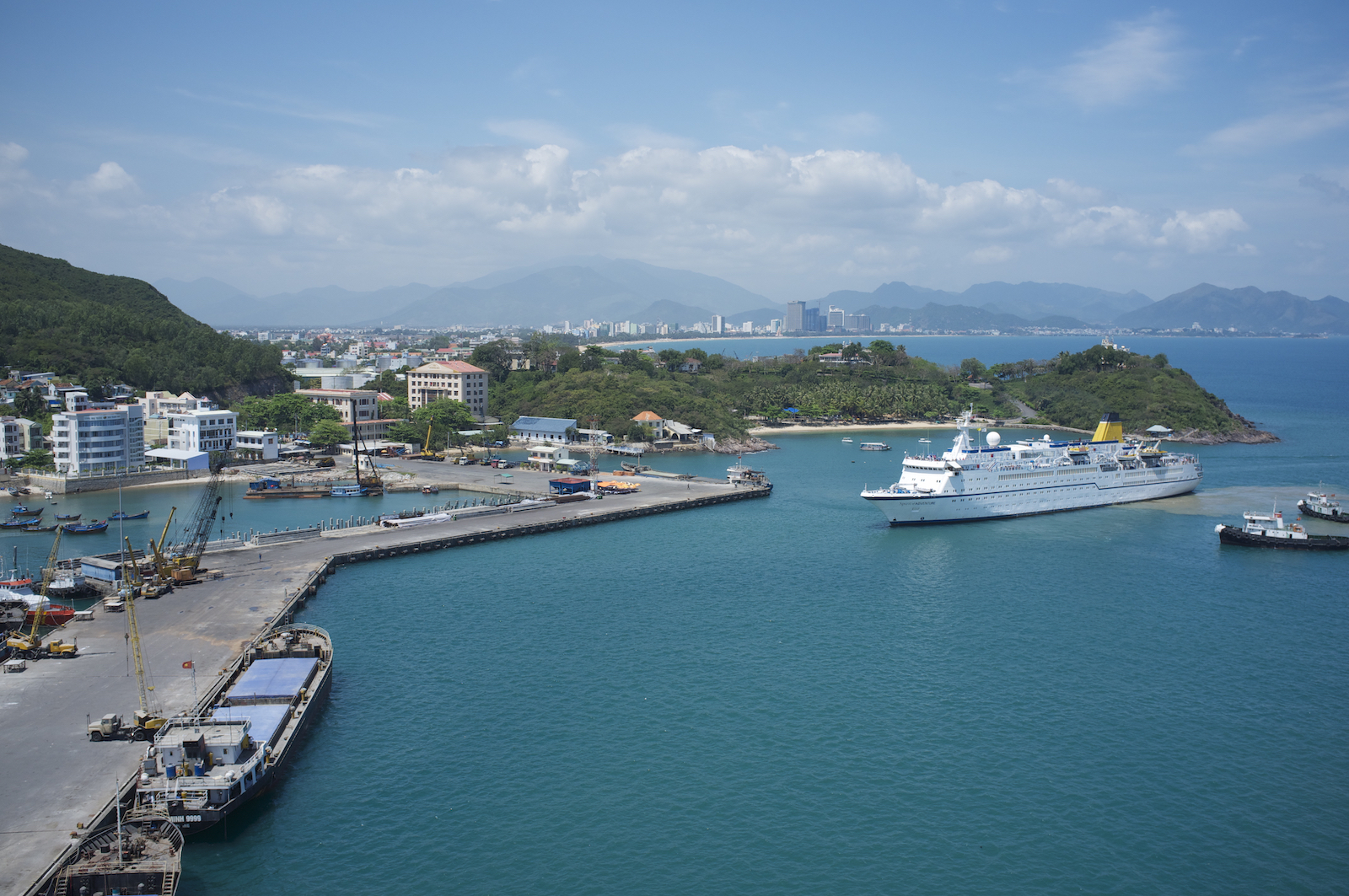
Another seaside resort location, Nha Trang, sits on the South China Sea and is known for its modern architecture blended with Catholic churches and old temples. Just outside the city, waterfalls and hot springs are popular day trips, which highlight the area’s natural beauty.
Can Tho

Can Tho is famous for its floating markets, which are the biggest draw for tourists. The city sits on the Mekong River and the Cai Rang floating market is a unique sight and experience. Tourists can get on the water in a small boat and buy traditional Vietnamese dishes before enjoying the sunset.
Ninh Binh
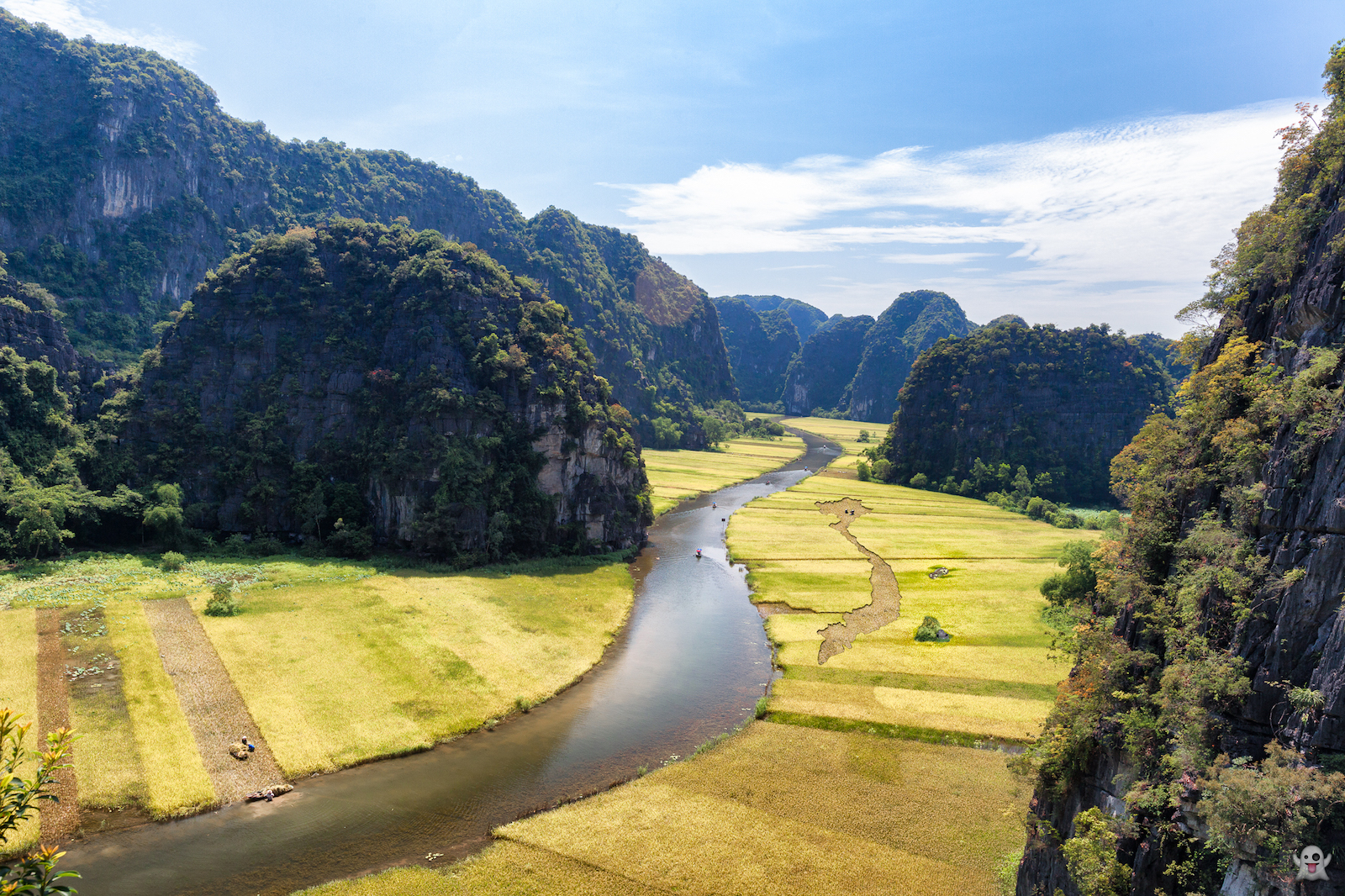
If you want to get into the local lifestyle and natural landscape, Ninh Binh is the best place to go for an otherworldly experience. The rural location is lined with limestone karst and an idyllic river. Nearby is the Tam Coc, which is a three-part cave system. The caves can be explored by boat, and there are a variety of guided tours available.
Points of Interest
While cities are always fun to explore, Vietnam is also home to plenty of points of interest, from stunning natural wonders to man-made architecture. Whether you want to hike, spend time on a boat, or enter the world’s largest cave, there are plenty of tourist destinations to choose from.
Discover the best of Vietnam’s thermal springs to add to your itinerary, on Uncover Vietnam.
Ha Long Bay
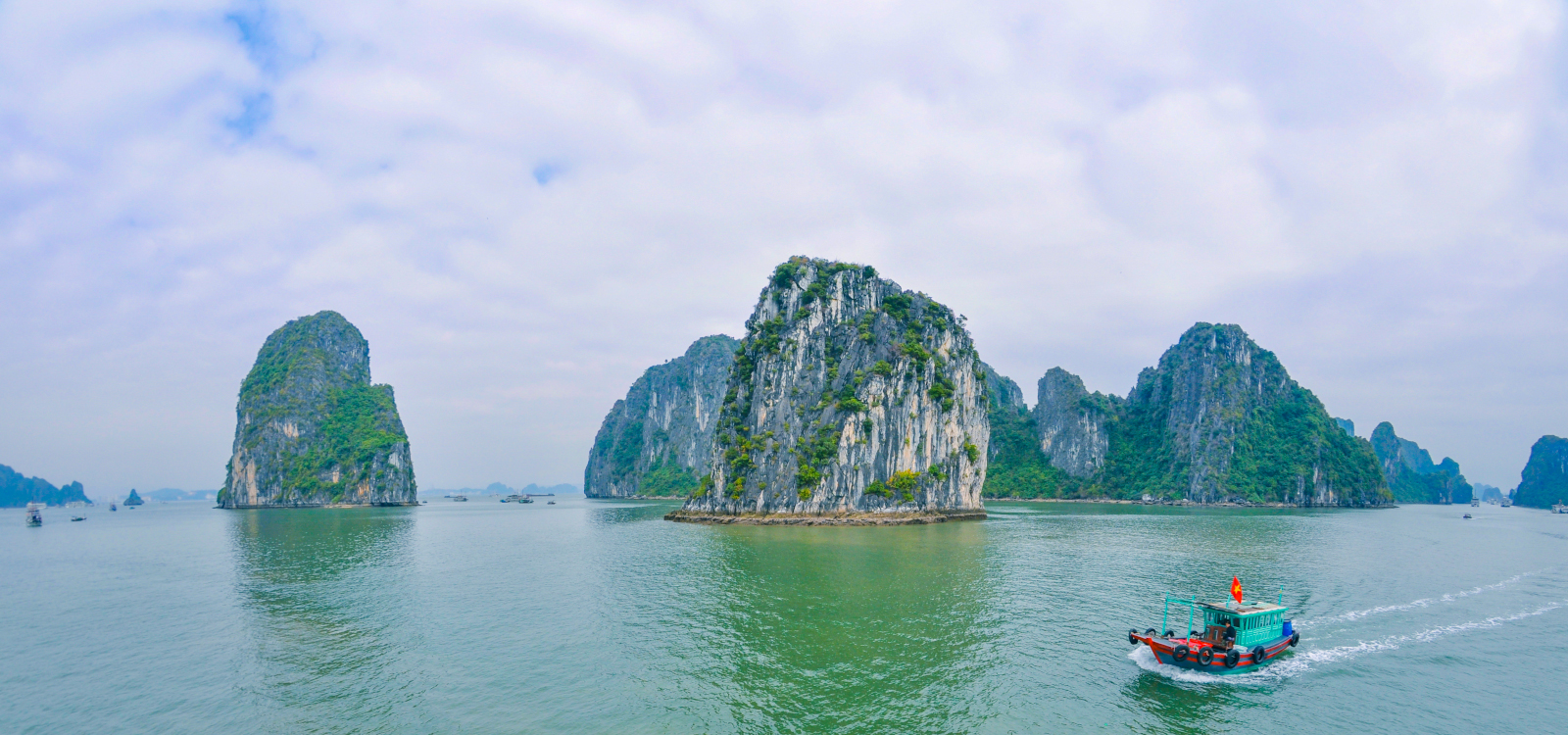
One of Vietnam’s top tourist destinations, Ha Long Bay is located in the northern region and is dotted with green islands. The jungle-like vegetation sits atop limestone pillars, and enormous caves only add to the beauty.
Many small fisherman villages float along the bay, though you’ll often find many different cruise boats touring the area.
Fansipan Mountain
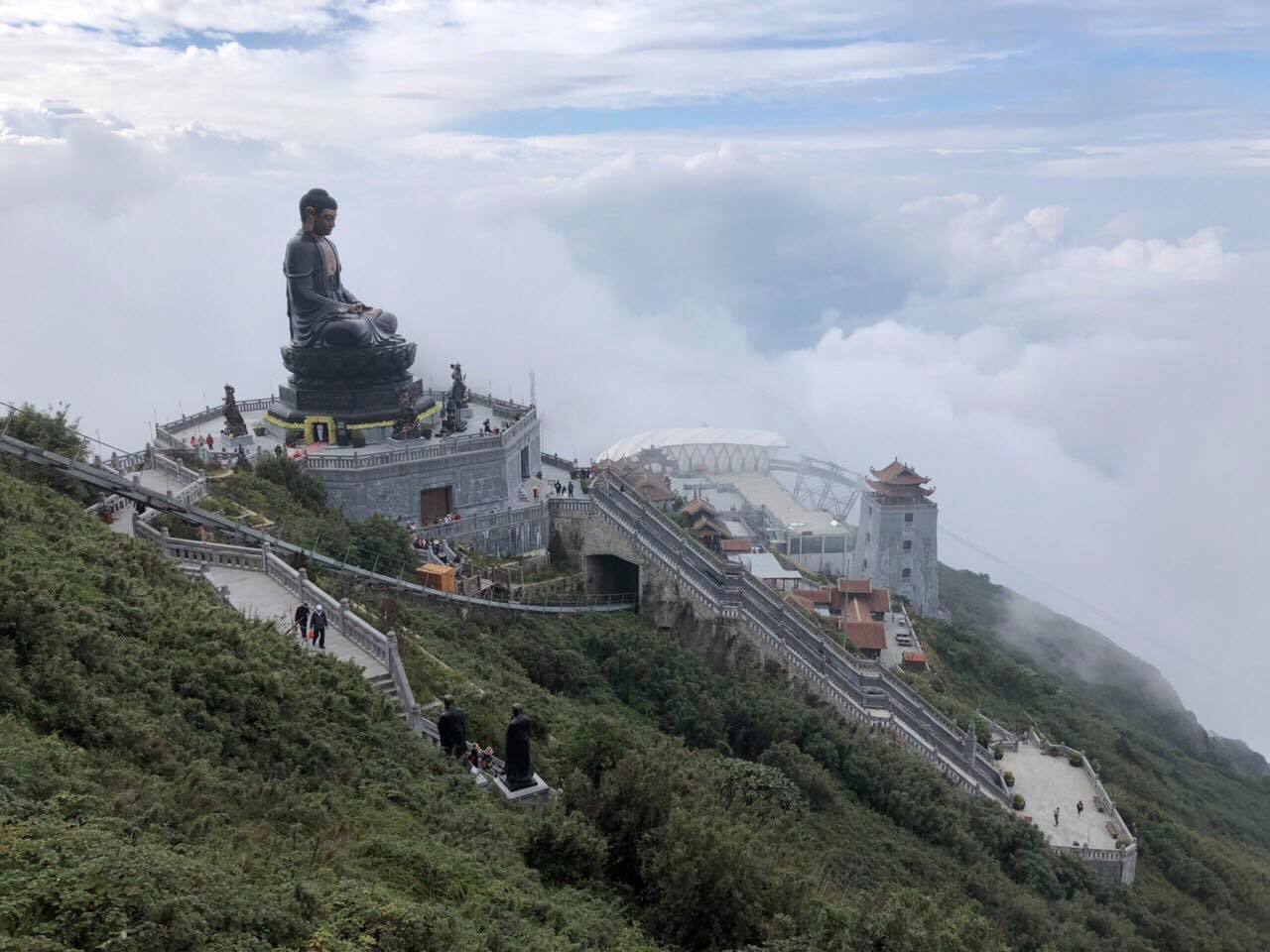
Fansipan Mountain is the highest location in Vietnam and a popular tourist destination because of the mountain’s beauty. Often called the Roof of Indochina, the mountain rises 3,143 meters above sea level. A cable car will lift you into the clouds and gives you the best view of the area.
Hang Son Doong Cave

Located within the larger Phong Nha cave system, the Hang Son Doong Cave is one of the largest in the world and a popular camping location for tourists. Guided tours often pitch tents on the cave floor, which also features a river and blue water pools. An absolute wonder, the cave is plenty of guided tours available.
Con Dao Islands

Once used to house prisoners, the islands are now a hot spot for scuba divers and snorkelers. While some of the prison ruins can be toured, the beauty of the islands has made the area a top destination for tourists.
Marble Mountains

A series of 5 mountains, the Marble Mountains are filled with stunning caves and Buddhist temples. The caves are filled with shrines, and the entire area is sacred to the people. While a more offbeat location, the mountain’s picturesque appearance draws off-the-beaten-path travelers.
Sa Pa Terraces
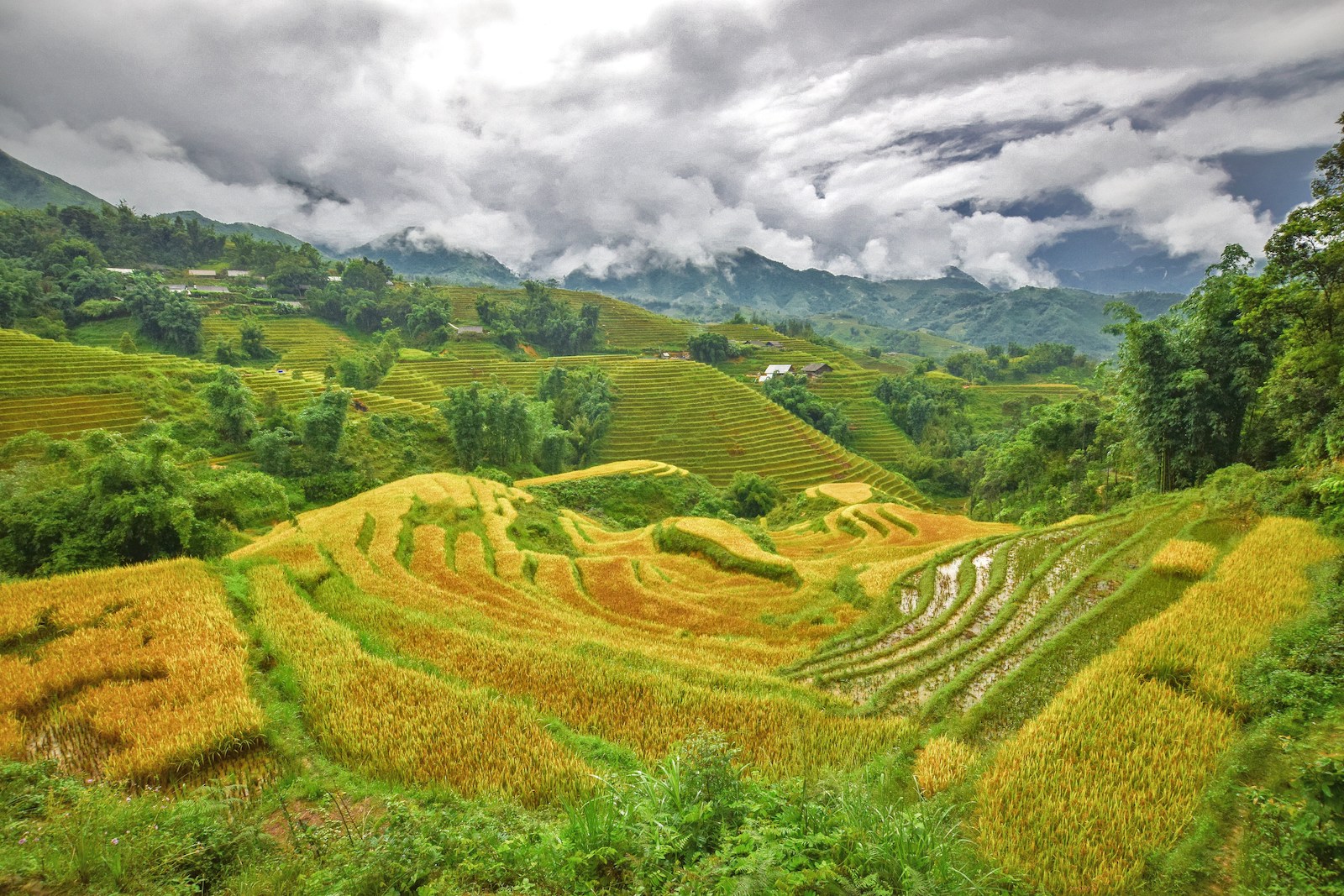
The Sa Pa Terraces have become one of the most famous visuals from Vietnam, which boasts the perfect cut and kept rice paddies. Located in the Muong Hoa Valley, the paddies have become a destination for those who want to experience the beauty of nature and human co-existing.
“Land of the Blue Dragon”
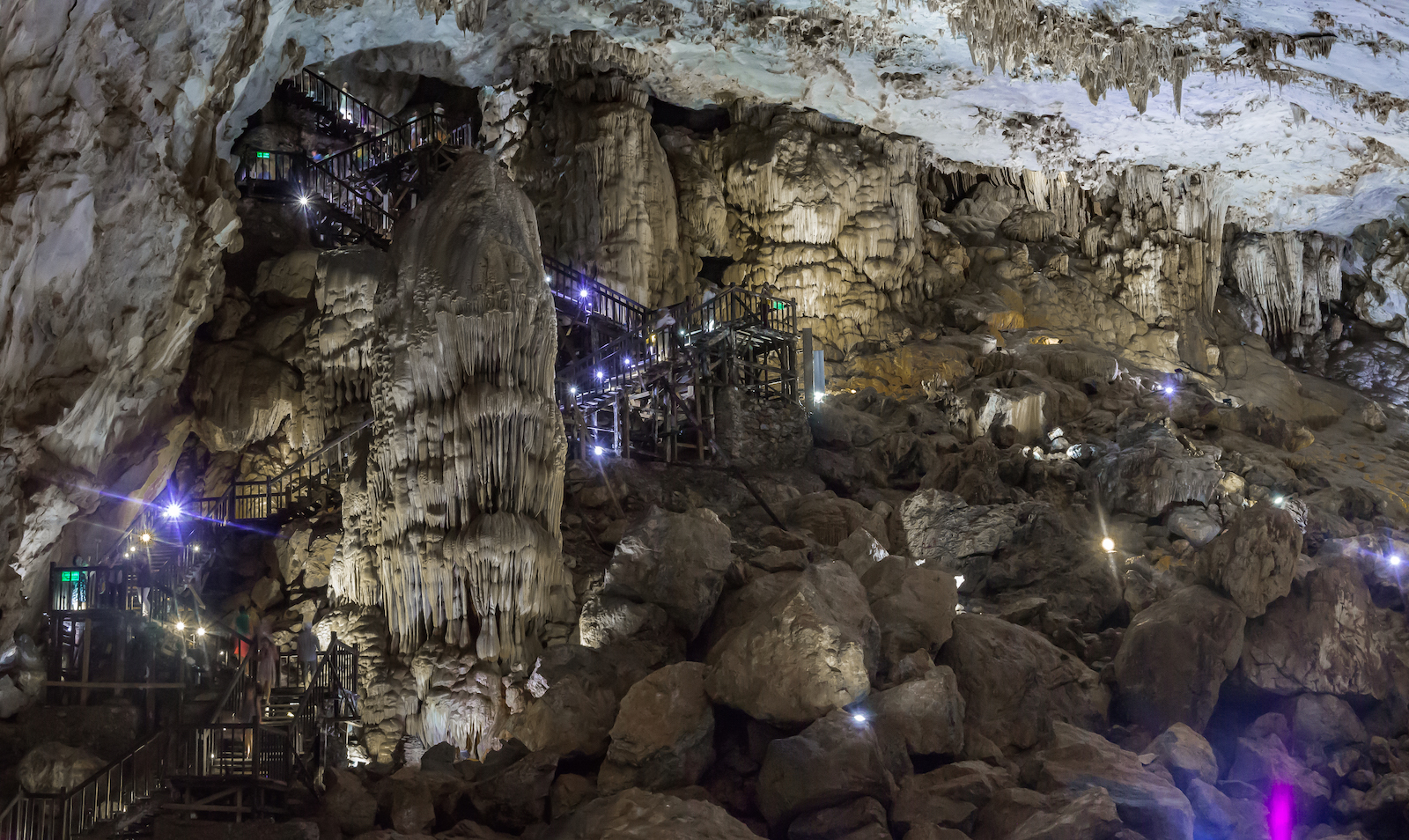
While Vietnam is a smaller country, it is still packed with stunning destinations. The natural beauty of the landscape and the chaotic cities are becoming ever more popular with adventurous tourists.
Whether you’re there to pay tribute to those fallen during the war or want to escape into the natural wonders of the world, Vietnam will be a vacation you won’t soon forget.



 What Is Papua New Guinea Most Famous For?
What Is Papua New Guinea Most Famous For?